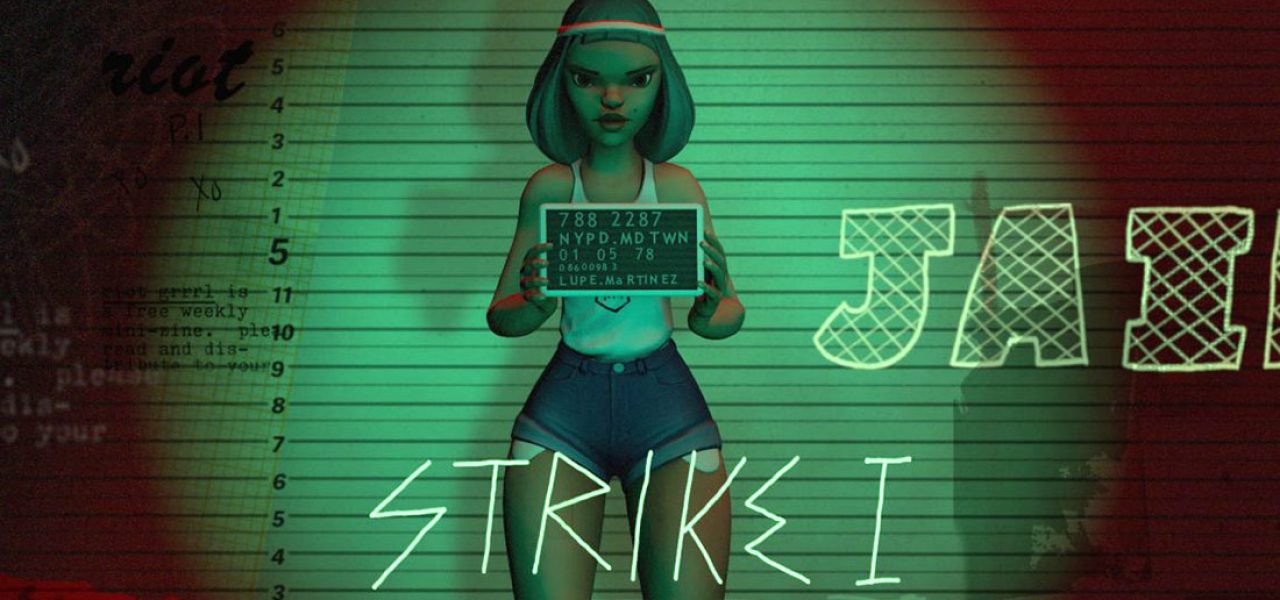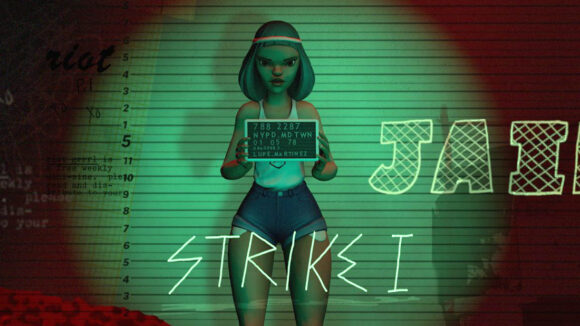

The State of VR Animation: A Review Of Works Presented At Anima Festival
“There are no experts in virtual reality. If someone says they are one, don’t believe them,” says Corentin Lambot.
Lambot is a producer at Atlas V, one of the most dynamic virtual reality startups around. He would pass as a vr expert if such people existed. The reason they don’t – or so he argued to an attentive audience at Anima Festival – is that the medium has as yet no rules, only vague watchwords in “immersion” and “interactivity.” The language of vr is still being devised; one cannot master it any more than one could govern the Wild West.
All progressive animation festivals now showcase the technology in some way, with varying enthusiasm from the programmers. Lambot’s presentation was only one part of Anima’s offering. This year’s edition, which ran March 1–10 in Brussels, Belgium, featured an inaugural vr competition; the curation was outsourced to Poolpio, an immersive content agency.
Eight animated works were in contention, of which I saw four: Gloomy Eyes, BattleScar (both by Atlas V), Back to the Moon (Google Spotlight Stories), and Museum of Symmetry (National Film Board of Canada). Gloomy Eyes, a sentimental gothic tale with a Tim Burton vibe, was a European premiere. It took the prize.
The projects lasted between two and seventeen minutes. Though visually and thematically diverse, they were all broadly narrative works. True to Lambot’s words, each espoused a very different idea of what immersion means. They exhibited much ingenuity, little consistency, and some obstacles to good storytelling, which I describe below.
Pacing
Theatrical films are linear, but vr ones don’t have to be. Directors of the latter choose whether to unfold their story along a fixed timeline or pause/vary it if the viewer looks away from the action.
There’s nothing wrong with letting audiences disrupt the pacing – novelists do too – but if a vr work takes this approach, it has to ensure two things. First, the viewer must know what to do in order to resume the story. Second, they cannot be allowed to drift off at moments of suspense or high emotion; alternatively, such moments must be left out in the first place.
Back to the Moon, directed by French artists Fx Goby and Helene Leroux, finds an elegant solution. The setting is the atelier of Georges Méliès, who pioneered special effects in cinema’s early days. A cartoon Méliès appears and starts to reenact some of his signature stunts. I turned around and examined the room, which was full of curios (all of them, I was told, based on the man’s real possessions). When I looked back, Méliès was frowning and pointing me toward the action, which had paused.
This nudging technique, borrowed from video games, is obviously practical – but Goby and Leroux turned it into a light comic touch, too. The plot, being episodic and not too dramatic, could afford to wait for me.
Museum of Symmetry provides a counterexample. I was plunged into a series of lysergic dreamscapes conceived by artist Paloma Dawkins, while freaky humanoids yabbered at me. Unlike the other works, this one required me to use a simple controller to interact with the world. At one point, a character must have given me an instruction, but I was too distracted to catch it. The direction wasn’t repeated, and I was left to fumble around until I did the right thing by chance. “I don’t want to guide the player [ … ] You’re not going to be told what’s going on all the time in real life,” Dawkins has explained. But I wasn’t pleasantly lost in her world – I was stuck.
Narration
Dialogue has barely featured in the vr I’ve sampled. The reason, I suspect, is that conversations can be hard to follow when the viewer isn’t observing the speakers. Instead, many works resort to narrators (often voiced by stars, who catch the attention of festivals like Sundance, as well as audiences).
Narrators introduce a new problem, which is closely linked to pacing. I’ve often found that they speak too much – this could be the creators compensating for their lack of control over the mise en scène.
In BattleScar, Rosario Dawson delivers a fiery narrative about New York punks. But it barely lets up, and I found it hard to concentrate on her words while exploring the film’s world, especially when what she was saying didn’t align with what I was seeing. Gloomy Eyes struck more of a balance: the tale of an outsider in a society of zombies was told economically (in Colin Farrell’s melancholic tones). Given how distracting voiceovers can be, creators should use them sparingly.
A secondary issue, which some of my fellow viewers faced, is translation. If no dubs are available, where do the subtitles go? Do they stay in one place, effectively fixing my viewpoint, or do they follow my gaze and potentially interfere with the image? In the event, the three films in my program were left untranslated (Back to the Moon is silent).
Editing
Vr orthodoxy holds that edits should be avoided, as they are too disorienting. Creators are challenging this idea: BattleScar uses several hard cuts. But these are, for the most part, match cuts, which preserve the viewer’s rough position within the consecutive spaces.
Similarly, Back to the Moon employs seamless transitions between different versions of the same room. When it restages the titular journey from Méliès’s A Trip to the Moon, it brings the moon to the viewer, not vice versa. Edits may be acceptable, but sudden dislocations within the space are not. (In fact, I felt nauseous during end credits that scrolled, as they gave me the sensation that I was endlessly falling.)
Some directors find novel alternatives to cuts. I have experienced vr works that enable transitions between two scenes by presenting them in juxtaposed frames, like paintings in a gallery; the viewer steps out of one and into another, effectively guiding themselves through the edit.
Gloomy Eyes links its sets in a single interconnected structure, different parts of which are spotlit as the protagonist moves between them. The changes in light are motivated by the plot, which centers on the contrast between night and day. I could move toward and away from the action as I pleased; if I zoomed out, I got an exciting view of the whole world. This approach only worked because the various sets were aesthetically similar, and made sense as parts of a whole.
Technology
The headsets I used were Oculus Rift and HTC Vive. They were heavy and tight on my head (after adjustments), and I wasn’t even wearing my glasses. If I turned enough, the wires tensed around my body. Clearly, all this works against immersion.
I had a more comfortable time at another festival with Oculus Go, a model that is wireless and light, but comparatively low-tech. It is not room-scale – that is, it only enables 360-degree vision from a fixed point, not actual motion within the virtual world – and was thus incompatible with the program of work that I experienced at Anima.
I suffered a more specific problem in Museum of Symmetry. The user has to pick things up to proceed, but one of my objects, a watering can, failed to materialize. Embarrassed staff explained that this is a common glitch, and that the only options are to restart the film or quit. I chose the latter.
Isolation
A headset necessarily cuts you off from the real world; immersion entails isolation. Vr is inherently not the social medium that cinema can be. A cynic might say that this is perfect for our solipsistic age. An optimist will point out that some vr experiences are collective. During a recent visit to London’s Saatchi Gallery, I and five others donned a vr headset-cum-sensor for We Live in an Ocean of Air, an installation that invited us to walk around in the shade of a sequoia tree; I perceived the others as shifting clusters of red bubbles, signifying carbon dioxide. The sight of them was striking and oddly moving. Yet encountering another person’s virtual avatar is not the same as exchanging a few words or even a touch – one of the pleasures of watching a film with others.
The future
There is a lot about vr that I’ve missed out here. I’ve looked at it as a vehicle for storytelling, which is more or less how it was presented at Anima. It has many other uses – ambient non-narrative experiences, gaming, even pornography – where different rules apply.
The technology may take off in one of these capacities. It may come to rival cinema. It may pave the way for a related medium, such as augmented reality, to take off. Then again, it may just lose its mojo as the novelty fades. The closure of Google Spotlight Stories, announced last week, does nothing for its momentum.
To some extent, the fate of narrative vr rests on the talent that gets behind it. The trouble is that, at its heart, there is a tension between the freedom expected by the viewer and the manipulation inherent in good narrative. If a vr outfit wants to hire experienced writers and directors, it must convince them to cede a lot of power as storytellers and adapt to new complexities. I have seen scripts for vr works that come on spreadsheets, different plotlines branching off to accommodate all the decisions the viewer can make. Storyboards are notoriously tricky to draw up.
Of course, the technology opens up new avenues in return. In their modest ways, Back to the Moon and Gloomy Eyes showed me how stories can be enriched when audiences are empowered to make decisions. Yet their plots are very simple, verging on trivial. Fx Goby was an established director of (traditional) commercials and music videos when he was approached to make Moon. “I didn’t really like vr [before the project],” he told Cartoon Brew. “All these nerdy films that were so excited about showing off this new technology.” While he doesn’t regret trying the medium out, he will only return to it “if the story is right.”
Narrative vr is yearning for a Méliès of its own: someone who identifies the unique tricks it can play on an audience, and fully exploits them. Veteran animation directors like Jorge Gutierrez and Jan Pinkava have given it a shot, and more are being courted all the time. Equally, a visionary may arise from the generation that has grown up with vr and will soon come of age. For now, though, the medium remains suspended between the immersive thrill of gaming and the narrative force of cinema, unsure where to go.

.png)